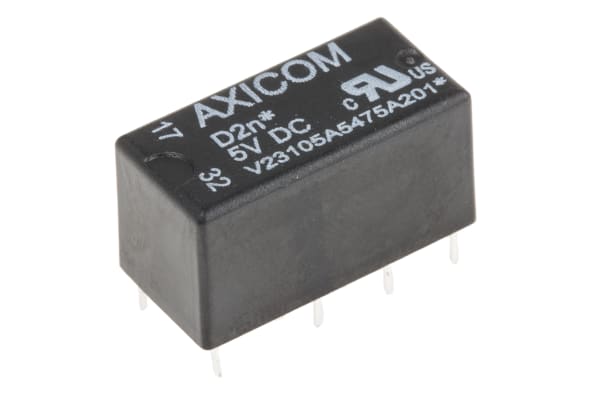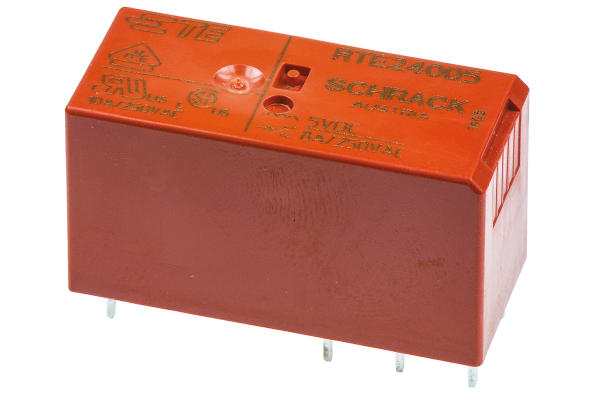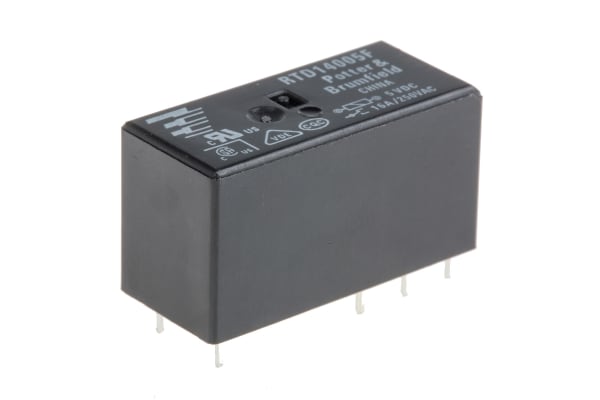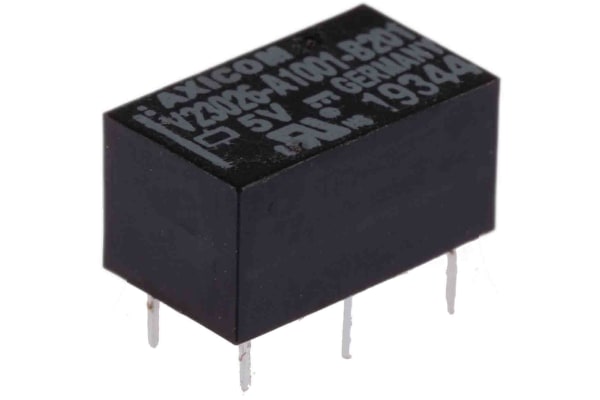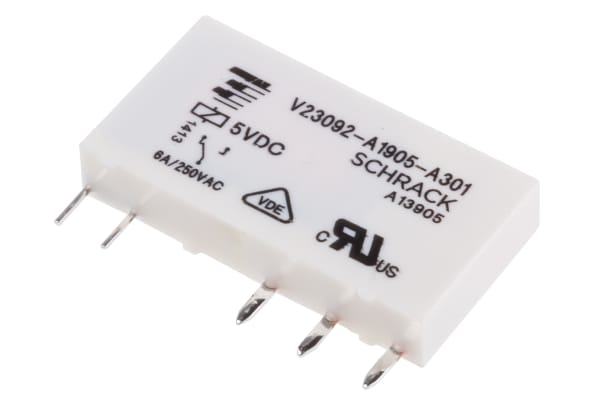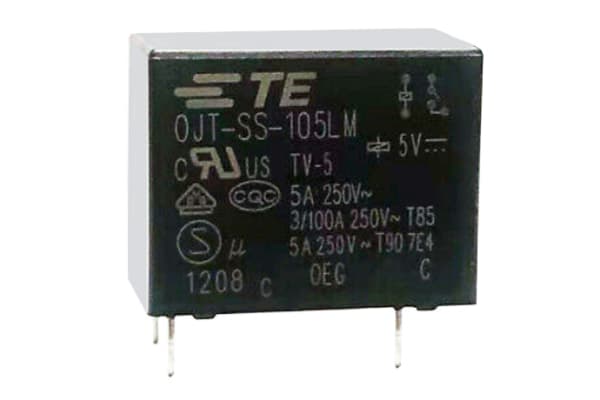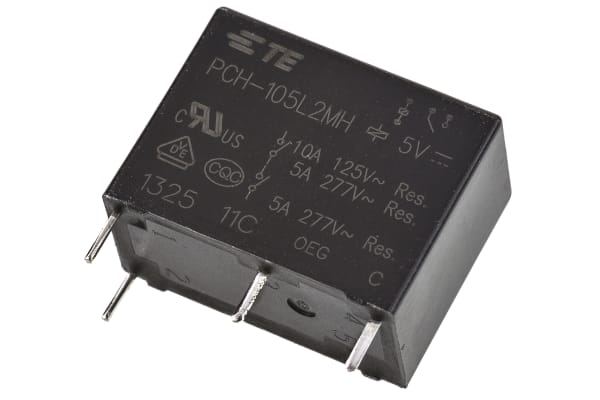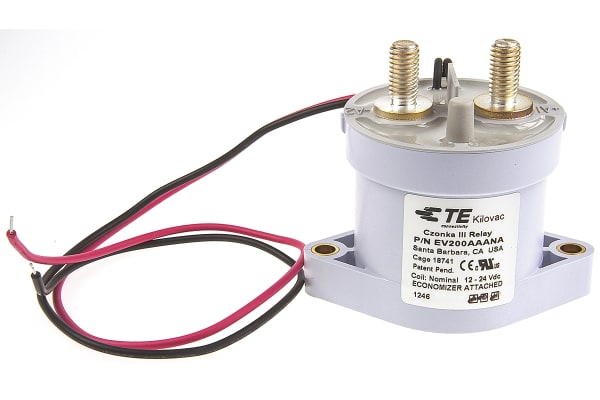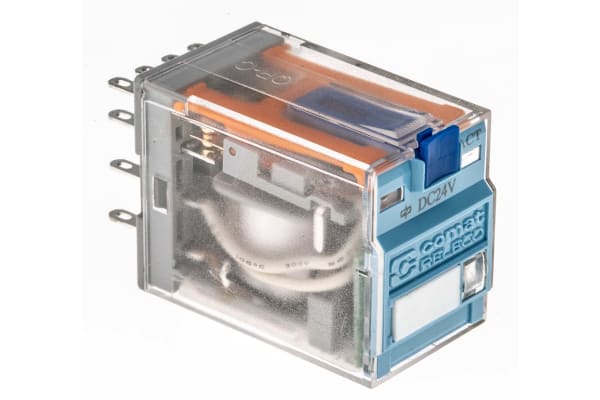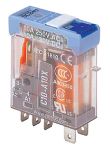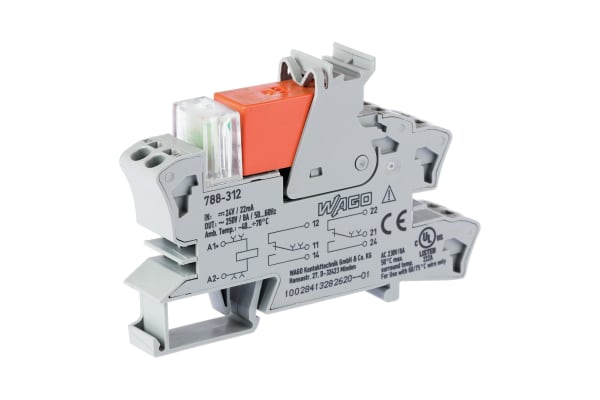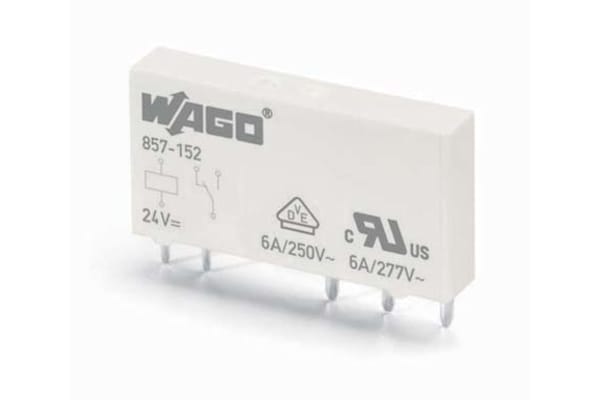Non-Latching Relays
Relays are electrical switches that are operated by electrical impulses with the primary function to open and close a circuit, they can also be referred to as industrial switches. There are 2 main types available, latching and non–latching relays.How do non-latching relays work?Non-latching relays are in a normally closed (NC) position and will stay in this state without power. When power passes through the circuit, the relay switched to a normally open (NO) position by using an internal coil to generate a magnetic force, holding this NO position. Once the current is turned off, it returns to the NC position. This makes non-latching relays well suited to push-button applications like keyboards and micro-controller input buttons.What are non-latching relays used for?Non-latching relays are highly durable and versatile components, making their performance long lasting and suitable for use in a wide range of applications, such as:Automotive enginesHousehold appliancesIndustrial machineryMedical equipmentTelecommunications equipmentWhat is the difference between latching and non-latching relays?Both types of relays in similar in design and function, however, a significant difference between them is that a latching relay will remain in the last position it when it was last powered, whereas a non-latching goes back to its normal position. This makes each more type of relay suitable for different applications. Considerations when selecting a relayWhen choosing a relay, it is important to consider a number of specifications to ensure it is fit for purpose, some factors include:Coil voltage – the required voltage to actuate the switching mechanism. If a voltage is too high this could damage the components, if it is too low then it will not actuate. Contact configuration – This is the state the contacts are in without power. For example SPST, single pole single throw.Contact material – the relay contacts are available in many materials that have certain properties. Common materials are gold, silver, tin oxide and nickel Coil power – the amount of power (watts) the coil operates at. This must match the power in the circuit for correct function. Coil resistance – the amount of resistance (ohms) in the circuit that the coil creates.
-
TE Connectivity, 5V dc Coil Non-Latching Relay DPDT, 3A Switching Current PCB Mount, 2 Pole, V23105A5001A201
IDR51,500.99 -
TE Connectivity, 5V dc Coil Non-Latching Relay DPDT, 3A Switching Current PCB Mount, 2 Pole, V23105A5475A201
IDR60,626.42 -
TE Connectivity, 5V dc Coil Non-Latching Relay DPDT, 8A Switching Current PCB Mount, 2 Pole, RTE24005
IDR56,640.60 -
TE Connectivity, 5V dc Coil Non-Latching Relay DPDT, 8A Switching Current PCB Mount, 2 Pole, RTE24005F
IDR87,688.04 -
TE Connectivity, 5V dc Coil Non-Latching Relay SPDT, 16A Switching Current PCB Mount Single Pole, RTD14005F
IDR75,311.02 -
TE Connectivity, 5V dc Coil Non-Latching Relay SPDT, 1A Switching Current PCB Mount Single Pole, V23026A1001B201
IDR153,978.52 -
TE Connectivity, 5V dc Coil Non-Latching Relay SPDT, 6A Switching Current PCB Mount Single Pole, V23092A1905A301
IDR125,972.89 -
TE Connectivity, 5V dc Coil Non-Latching Relay SPNO, 16A Switching Current PCB Mount Single Pole, 1-1415898-8
IDR98,596.60 -
TE Connectivity, 5V dc Coil Non-Latching Relay SPNO, 3A Switching Current PCB Mount Single Pole, PCN-105D3MHZ
IDR74,996.35 -
TE Connectivity, 5V dc Coil Non-Latching Relay SPNO, 5A Switching Current PCB Mount Single Pole, OJT-SS-105LM,000
IDR128,280.47Pack (1 Pack of 5) -
TE Connectivity, 5V dc Coil Non-Latching Relay SPNO, 5A Switching Current PCB Mount Single Pole, PCH-105L2MH,000
IDR39,858.20 -
TE Connectivity, 6V dc Coil Non-Latching Relay SPDT, 5A Switching Current PCB Mount Single Pole, V23057B1A101
IDR279,636.74 -
TE Connectivity, 9 → 36V dc Coil Automotive Relay SPNO, 500A Switching Current Flange Mount Single Pole,
IDR2,846,924.38 -
Turck, 24V dc Coil Non-Latching Relay 4PDT, 5A Switching Current Plug In, 4 Pole, C9-A41FX/024VDC
IDR570,182.04 -
Turck, 24V dc Coil Non-Latching Relay DPDT, 6A Switching Current Plug In, 2 Pole, C7-T21DX/024VDC
IDR706,014.59 -
Turck, 24V dc Coil Non-Latching Relay SPDT, 10A Switching Current Plug In Single Pole, C10-A10X/024VDC
IDR396,484.20 -
Turck, 5V dc Coil Non-Latching Relay SPDT, 10A Switching Current Plug In Single Pole, C10-A10X/005VDC
IDR423,231.15 -
Wago, 24V dc Coil Non-Latching Relay 4PDT, 36.9mA Switching Current DIN Rail, 4 Pole, 858-150
IDR95,449.90 -
Wago, 24V dc Coil Non-Latching Relay, 10mA Switching Current DIN Rail Single Pole, 857-304
IDR465,816.49 -
Wago, 24V dc Coil Non-Latching Relay, 10mA Switching Current DIN Rail Single Pole, 859-304
IDR594,096.96 -
Wago, 24V dc Coil Non-Latching Relay, 19.1mA Switching Current DIN Rail, 2 Pole, 788-312
IDR406,553.64 -
Wago, 24V dc Coil Non-Latching Relay, 6A Switching Current DIN Rail Single Pole, 857-152
IDR3,841,596.25Box (1 Box of 20)




